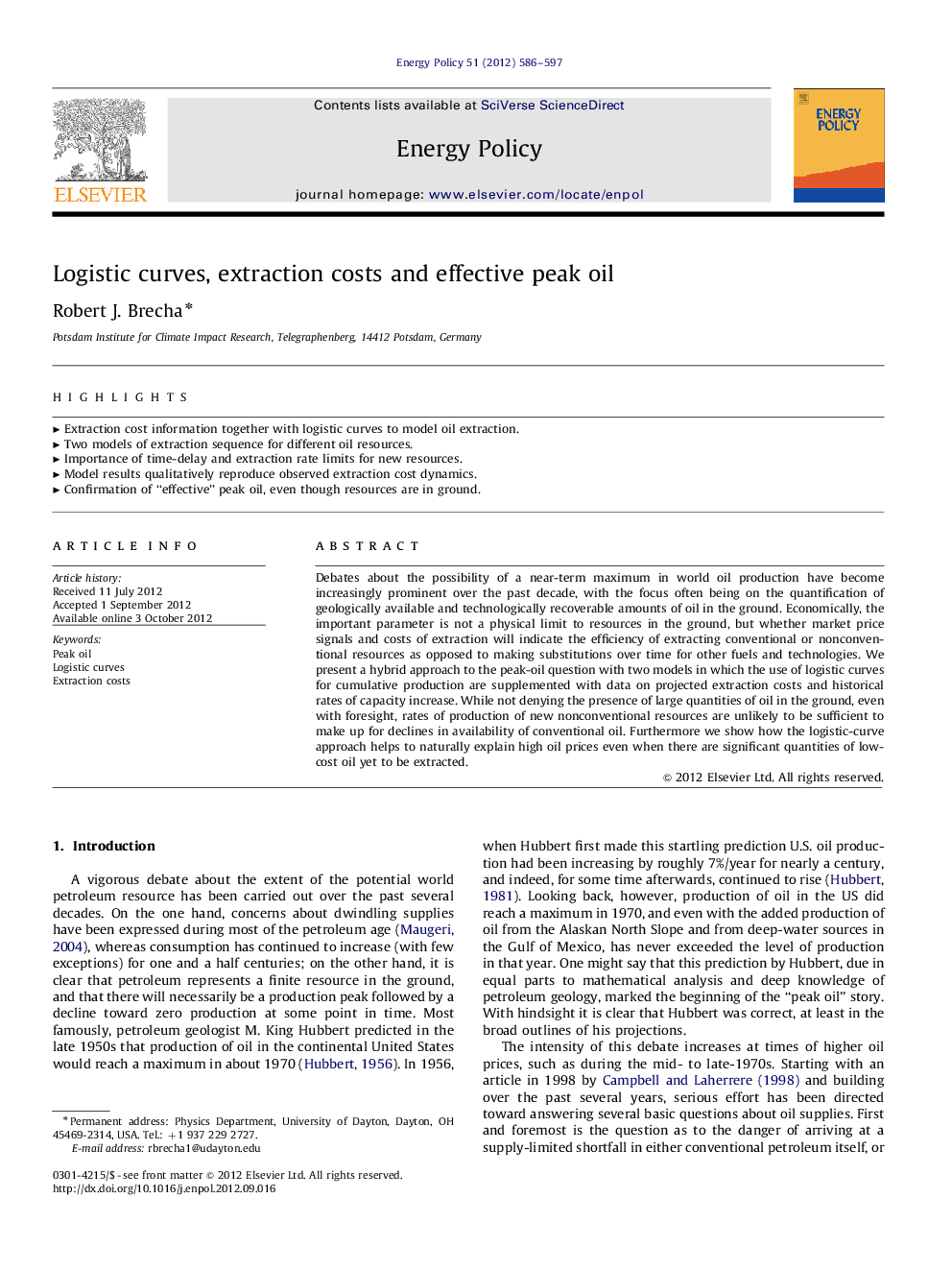| Article ID | Journal | Published Year | Pages | File Type |
|---|---|---|---|---|
| 995634 | Energy Policy | 2012 | 12 Pages |
Debates about the possibility of a near-term maximum in world oil production have become increasingly prominent over the past decade, with the focus often being on the quantification of geologically available and technologically recoverable amounts of oil in the ground. Economically, the important parameter is not a physical limit to resources in the ground, but whether market price signals and costs of extraction will indicate the efficiency of extracting conventional or nonconventional resources as opposed to making substitutions over time for other fuels and technologies. We present a hybrid approach to the peak-oil question with two models in which the use of logistic curves for cumulative production are supplemented with data on projected extraction costs and historical rates of capacity increase. While not denying the presence of large quantities of oil in the ground, even with foresight, rates of production of new nonconventional resources are unlikely to be sufficient to make up for declines in availability of conventional oil. Furthermore we show how the logistic-curve approach helps to naturally explain high oil prices even when there are significant quantities of low-cost oil yet to be extracted.
► Extraction cost information together with logistic curves to model oil extraction. ► Two models of extraction sequence for different oil resources. ► Importance of time-delay and extraction rate limits for new resources. ► Model results qualitatively reproduce observed extraction cost dynamics. ► Confirmation of “effective” peak oil, even though resources are in ground.
